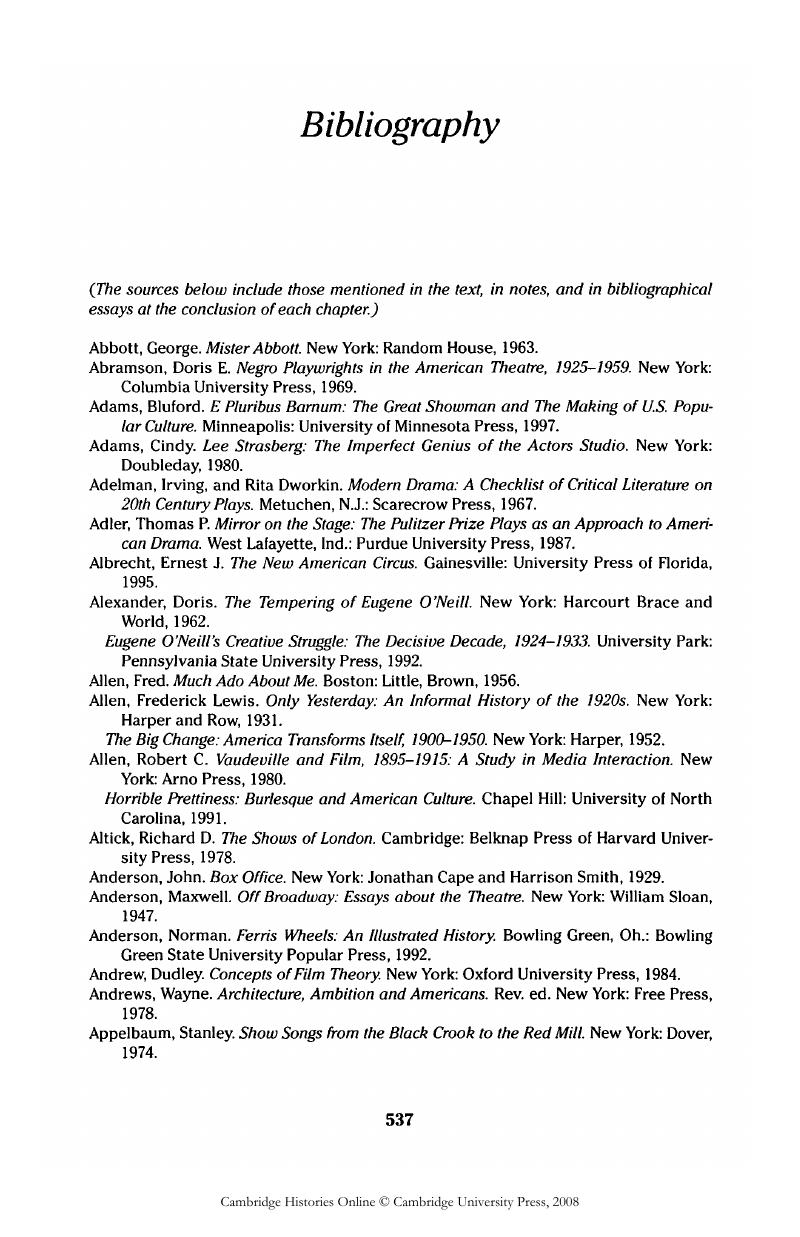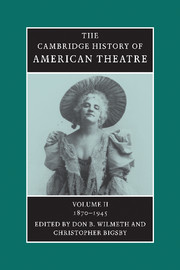Book contents
- Frontmatter
- Introduction
- Timeline: Post-Civil War to 1945
- 1 The Hieroglyphic Stage: American Theatre and Society, Post-Civil War to 1945
- 2 A Changing Theatre: New York and Beyond
- 3 Plays and Playwrights
- 4 Theatre Groups and Their Playwrights
- 5 Popular Entertainment
- 6 Musical Theatre
- 7 Actors and Acting
- 8 Scenography, Stagecraft, and Architecture
- 9 Directors and Direction
- Bibliography
- Index
- References
Bibliography
Published online by Cambridge University Press: 28 March 2008
- Frontmatter
- Introduction
- Timeline: Post-Civil War to 1945
- 1 The Hieroglyphic Stage: American Theatre and Society, Post-Civil War to 1945
- 2 A Changing Theatre: New York and Beyond
- 3 Plays and Playwrights
- 4 Theatre Groups and Their Playwrights
- 5 Popular Entertainment
- 6 Musical Theatre
- 7 Actors and Acting
- 8 Scenography, Stagecraft, and Architecture
- 9 Directors and Direction
- Bibliography
- Index
- References
Summary

- Type
- Chapter
- Information
- The Cambridge History of American Theatre , pp. 537 - 568Publisher: Cambridge University PressPrint publication year: 1999



